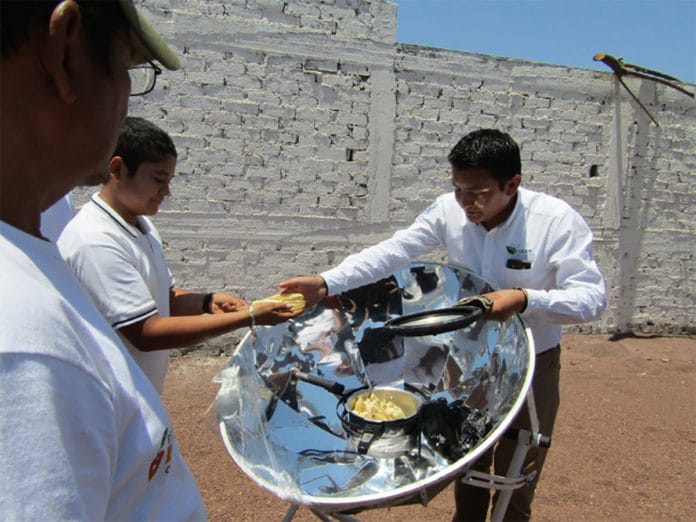Turning environmental pollutants into renewable solar energy while reducing carbon emissions may sound like something out of a science fiction film, but researchers at the University of Houston and the Universidad Intercultural Indígena de Michoacán of Mexico are working to turn this proposal into reality.
Francisco Robles-Hernández, UH Professor of Mechanical Engineering Technology, and Luis Bernardo López-Sosa, Professor of Energy Sustainability Engineering at UIIM, demonstrated how soot, the byproduct of burnt organic materials such as biomass, carbon, and hydrocarbons, can convert solar energy into heat. Using soot to improve solar thermal devices would make them not only cheaper to produce but more efficient than using materials like graphene.
The team used the biomass extracted from burning wood in the Mexican state of Michoacán to produce a paste-like coating with high solar-to-heat-conversion efficiency. Soot is currently considered an environmental pollutant. However, they are ideal for reducing carbon footprints and can contribute to a true net-zero energy transition, researchers say.
The researcher duo created flat pallets and coatings made from soot from burned wood, pet coke, and other hydrocarbons. Their investigations found that the soot derived from biomass had better properties to absorb solar energy and convert it into heat than other pristine carbon structures, such as fullerene, graphene, or nanotubes.
“There is no energy involved in producing soot because it is an abundant byproduct, and its circular-reutilization can only reduce carbon footprints. The cost is near-zero, which makes it cost-effective and ideal for solar to heat conversion,” said Robles-Hernández, who noted aspirations to move toward commercialization.
In the study, researchers built a solar stove prototype that can be heated up to 400 degrees Fahrenheit. They found that soot outperformed the other materials, such as graphene, nanotubes, and fullerene, in a few key areas. Its solar absorptivity was 96% higher when compared to commercial products, light emission was 85% higher and 15 times cheaper. Biomass and soot have comparable or better solar conversion characteristics and sustainability than pristine carbon nanostructures, and they are up to 3 orders of magnitude cheaper.
Robles-Hernández thinks the coating could be used in large heaters or boilers to dry large quantities of industrial products. In addition, the use of combustion-derived residues can be a game-changer for thermal conversion in solar stills, heaters, house heating, water purifiers, and other technologies.
“The next step for this project is to mass-produce solar-to-heat convertors for food processing; ultimately, the motivation for this project is to benefit the environment, using carbon waste or byproducts for household and industrial processes,” López-Sosa added. “The language of the local communities where I work is Purepécha. In Purepécha, we say ‘Jaroajperakua,’ which can be translated as climate change prevention or awareness.”
